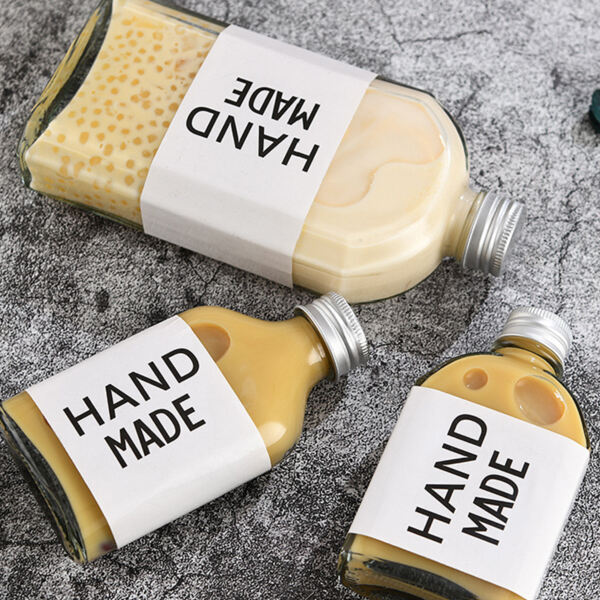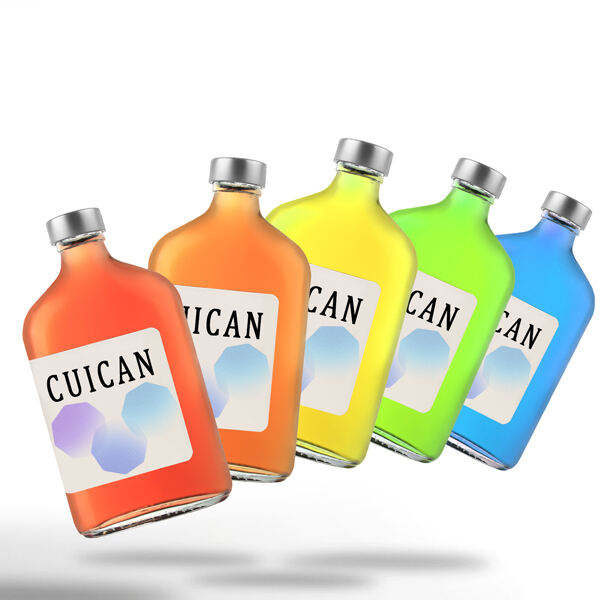Glass vs. Plastic Beverage Bottles: Which Is Better for the Environment?
When it comes to choosing between glass and plastic beverage bottles, the environment is a key factor. Both materials have pros and cons, from how they’re made to how they’re disposed of. Understanding their environmental impact can help consumers and brands make smarter choices. Let’s break down how glass beverage bottles and plastic beverage bottles compare, focusing on sustainability, waste, and long-term effects.
1. How They’re Made: Energy and Emissions
The environmental impact starts with production. Both glass and plastic beverage bottles use resources, but in different ways.
Glass Beverage Bottles
Making glass beverage bottles requires heating silica sand, soda ash, and limestone to extremely high temperatures (over 1,700°C). This process uses a lot of energy—mostly from fossil fuels like natural gas. As a result, glass production releases more carbon dioxide (CO2) per bottle compared to plastic. For example, making one glass bottle emits about twice as much CO2 as making a plastic bottle of the same size.
But there’s a bright side: using recycled glass (cullet) in production cuts energy use by up to 30%. The more recycled glass goes into new glass beverage bottles, the lower their carbon footprint.
Plastic Beverage Bottles
Plastic comes from petroleum (oil), a non-renewable resource. Extracting and refining oil for plastic production releases greenhouse gases, contributing to climate change. Making plastic beverage bottles also uses energy, but less than glass—about half the energy of glass for the same size bottle.
However, plastic production depends on fossil fuels, which are finite. As oil becomes scarcer, plastic production may become more costly and environmentally harmful over time.
2. Recycling: Which Is More Recyclable?
Recycling reduces waste and saves resources. Here’s how glass and plastic beverage bottles stack up.
Glass Beverage Bottles
Glass beverage bottles are 100% recyclable and can be recycled infinitely without losing quality. A recycled glass bottle can become a new glass bottle in as little as 30 days. Recycling glass also cuts down on the need for raw materials (like sand) and reduces CO2 emissions by 20–30% compared to making glass from scratch.
But recycling glass has downsides. Glass is heavy, so transporting recycled glass to factories uses more fuel, adding to its carbon footprint. Also, not all areas have glass recycling programs, so many glass bottles end up in landfills.
Plastic Beverage Bottles
Most plastic beverage bottles are made from PET (polyethylene terephthalate), which is recyclable—but only a small percentage actually gets recycled. Globally, less than 10% of plastic bottles are recycled. The rest are buried in landfills, burned (releasing toxic fumes), or dumped in oceans.
Plastic can only be recycled 2–3 times before its quality drops, and it often ends up as lower-grade plastic (like park benches or clothing). This “downcycling” means plastic bottles rarely become new plastic bottles, creating a cycle of more plastic production.
3. Reusability: Getting More Use Out of Each Bottle
Reusing bottles reduces the need to make new ones, which is great for the environment. Here, glass beverage bottles have a clear edge.
Glass Beverage Bottles
Glass is durable and can be reused dozens of times. A glass bottle can be refilled with water, juice, or other drinks at home, in cafes, or at refill stations. Many brands now sell drinks in glass bottles designed for reuse—customers return them for a discount, cutting down on waste.
For example, a glass milk bottle that’s reused 20 times cancels out the higher energy used to make it, making it more eco-friendly than single-use plastic.

Plastic Beverage Bottles
Plastic is less durable. Thin plastic bottles (like those for water or soda) scratch easily, trap bacteria, and break down over time, releasing microplastics into drinks. Even thick plastic bottles can only be reused a few times before they need to be thrown away.
Reusable plastic bottles (like those made from HDPE) are sturdier but still not as long-lasting as glass. They also risk absorbing flavors or chemicals from drinks, limiting their reuse.
4. Waste and Pollution: What Happens When They’re Thrown Away?
When bottles aren’t recycled or reused, they become waste. Their impact on the environment differs sharply.
Glass Beverage Bottles
Glass takes millions of years to break down in landfills, but it’s inert—it doesn’t release toxic chemicals into soil or water. A glass bottle in a landfill won’t harm wildlife or pollute ecosystems, even over time.
However, glass is heavy, so landfills fill up faster with glass waste. And while it doesn’t leach toxins, mining sand for new glass destroys habitats, like riverbeds and beaches.
Plastic Beverage Bottles
Plastic is a major pollution problem. It can take 450+ years to decompose, and as it breaks down, it turns into microplastics—tiny pieces that enter water, soil, and even the food chain. Marine animals often mistake plastic for food, leading to injury or death.
Plastic also releases greenhouse gases as it degrades, contributing to climate change. Even “biodegradable” plastic often needs industrial conditions to break down, and in nature, it still acts like regular plastic for years.
5. When Is Each Better for the Environment?
Neither glass nor plastic is perfect, but their impact depends on how they’re used:
- Choose glass beverage bottles if: You can reuse them many times, live in an area with good glass recycling, or want to avoid microplastics. They’re best for drinks you buy regularly (like milk or juice) that come in reusable glass.
- Choose plastic beverage bottles if: They’re recycled properly, used once for a specific need (like travel), or made from recycled plastic. But this is only better if the plastic doesn’t end up in landfills or oceans.
FAQ
Are glass beverage bottles always better for the environment?
Not always. If a glass bottle is used once and thrown away, its high production energy makes it worse than a recycled plastic bottle. But if reused 10+ times, glass becomes more eco-friendly.
Why is plastic recycling so low?
Many areas lack recycling facilities, and plastic is cheap to replace, so companies often make new plastic instead of using recycled material. Also, plastic bottles with labels or caps are harder to recycle.
Can glass beverage bottles release chemicals into drinks?
No. Glass is inert, so it doesn’t react with drinks (even acidic ones like juice or soda). This makes it safer for reuse.
Do plastic bottles made from plants (bioplastics) solve the problem?
Not entirely. Bioplastics need specific conditions to decompose and still release methane (a greenhouse gas) in landfills. They’re better than petroleum-based plastic but not a perfect solution.
Is it better to buy a reusable plastic bottle or a glass one?
A glass bottle is better for long-term use. It lasts longer, doesn’t leach chemicals, and can be recycled infinitely. Reusable plastic is better than single-use plastic but not as eco-friendly as glass.
How can I make my glass beverage bottles more eco-friendly?
Reuse them as much as possible, recycle them when they’re no longer usable, and support brands that use recycled glass in their bottles.
Why do some brands still use plastic instead of glass?
Plastic is lighter, cheaper to ship, and less likely to break, which saves money. However, more brands are switching to glass as consumers demand eco-friendly options.
Table of Contents
- Glass vs. Plastic Beverage Bottles: Which Is Better for the Environment?
- 1. How They’re Made: Energy and Emissions
- 2. Recycling: Which Is More Recyclable?
- 3. Reusability: Getting More Use Out of Each Bottle
- 4. Waste and Pollution: What Happens When They’re Thrown Away?
- 5. When Is Each Better for the Environment?
-
FAQ
- Are glass beverage bottles always better for the environment?
- Why is plastic recycling so low?
- Can glass beverage bottles release chemicals into drinks?
- Do plastic bottles made from plants (bioplastics) solve the problem?
- Is it better to buy a reusable plastic bottle or a glass one?
- How can I make my glass beverage bottles more eco-friendly?
- Why do some brands still use plastic instead of glass?

